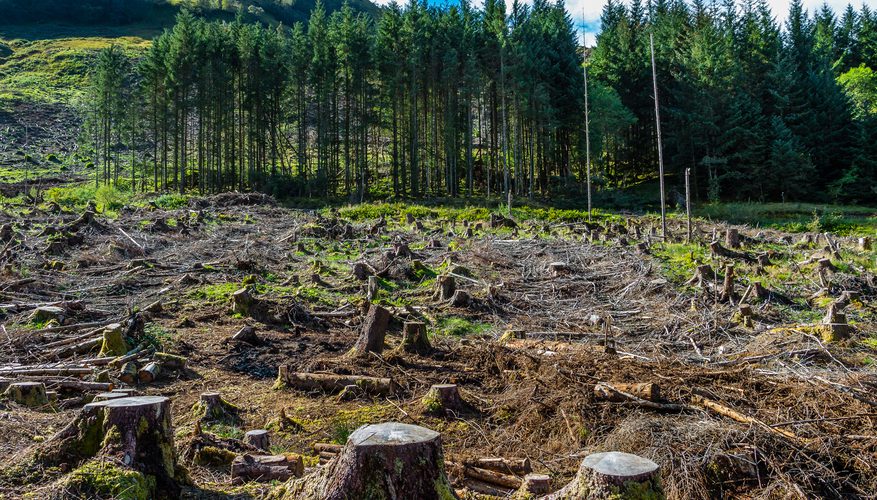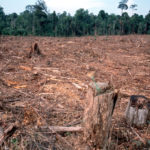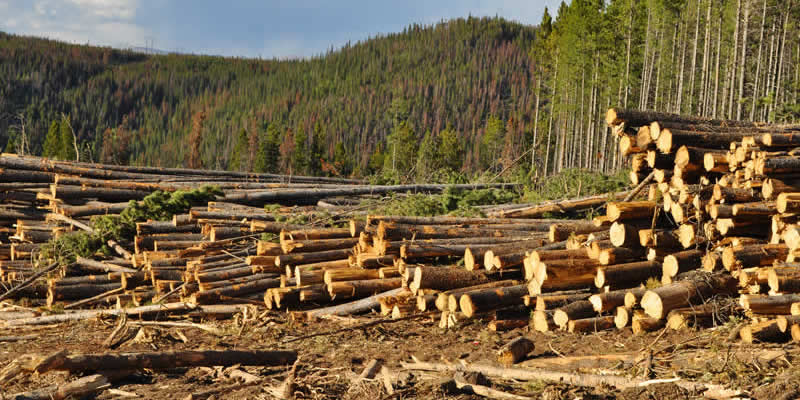Deforestation Essay
This is a process to remove a forest or stand of trees from land which is then converted to a non-forest use. Deforestation is the permanent destruction of forests in order to make the land available for other uses. An estimated 18 million acres (7.3 million hectares) of forest, which is roughly the size of the country of Panama, are lost each year.

Deforestation for Kids
This is a process to remove a forest or stand of trees from land which is then converted to a non-forest use. Deforestation is the permanent destruction of forests in order to make the land available for other uses. An estimated 18 million acres (7.3 million hectares) of forest, which is roughly the size of the country of Panama, are lost each year.
What is Deforestation?
DEFORESTATION is the removal of a forest or stand of trees from land which is then converted to a non-forest use. Deforestation can involve conversion of forest land to farms, ranches, or urban use. The most concentrated deforestation occurs in tropical rain forests. About 31% of Earth’s land surface is covered by forests.

Deforestation can occur for several reasons: trees can be cut down to be used for building or sold as fuel (sometimes in the form of charcoal or timber), while cleared land can be used as pasture for livestock and plantation.
The removal of trees without sufficient reforestation has resulted in habitat damage, biodiversity loss, and aridity. It has adverse impacts on bio sequestration of atmospheric carbon dioxide. Deforestation has also been used in war to deprive the enemy of vital resources and cover for its forces.
Modern examples of this were the use of Agent Orange by the British military in Malaya during the Malayan Emergency and by the United States military in Vietnam during the Vietnam War. As of 2005, net deforestation rates had ceased to increase in countries with a per capital GDP of at least US$4,600.Deforested regions typically incur significant adverse soil erosion and frequently degrade into wasteland.
Causes of Deforestation
Experts do not agree on whether industrial logging is an important contributor to global deforestation. Some argue that poor people are more likely to clear forest because they have no alternatives, others that the poor lack the ability to pay for the materials and labor needed to clear forest.
One study found that population increases due to high fertility rates were a primary driver of tropical deforestation in only 8% of cases.

According to the United Nations Framework Convention on Climate Change (UNFROCK) secretariat, the overwhelming direct cause of deforestation is agriculture. Subsistence farming is responsible for 48% of deforestation; commercial agriculture is responsible for 32%; logging is responsible for 14%, and fuel wood removals make up 5%.

Other causes of contemporary deforestation may include corruption of government institutions, the inequitable distribution of wealth and power, population growth and overpopulation, and urbanization. Globalization is often viewed as another root cause of deforestation, though there are cases in which the impacts of globalization (new flows of labor, capital, commodities, and ideas) have promoted localized forest recovery.
In 2000 the United Nations Food and Agriculture Organization (FAO) found that “the role of population dynamics in a local setting may vary from decisive to negligible”, and that deforestation can result from “a combination of population pressure and stagnating economic, social and technological conditions”

Some commentators have noted a shift in the drivers of deforestation over the past 30 years. Whereas deforestation was primarily driven by subsistence activities
And government-sponsored development projects like transmigration in countries like Indonesia and colonization in Latin America, India, Java, and so on, during the late 19th century.
And the earlier half of the 20th century, by the 1990s the majority of deforestation was caused by industrial factors, including extraction industries, large-scale cattle ranching, and extensive agriculture. Since 2001, commodity-driven deforestation, which is more likely to be permanent, has accounted for about a quarter of all forest disturbance, and this loss has been concentrated in South America and Southeast Asia.

The degradation of forest ecosystems has also been traced to economic incentives that make forest conversion appear more profitable than forest conservation.
Many important forest functions have no markets, and hence, no economic value that is readily apparent to the forests’ owners or the communities that rely on forests for their well-being.
From the perspective of the developing world, the benefits of forest as carbon sinks or biodiversity reserves go primarily to richer developed nations and there is insufficient compensation for these services. Developing countries feel that some countries in the developed world, such as the United States of America, cut down their forests centuries ago and benefited economically from this deforestation,
and that it is hypocritical to deny developing countries the same opportunities, i.e. that the poor shouldn’t have to bear the cost of preservation when the rich created the problem.
